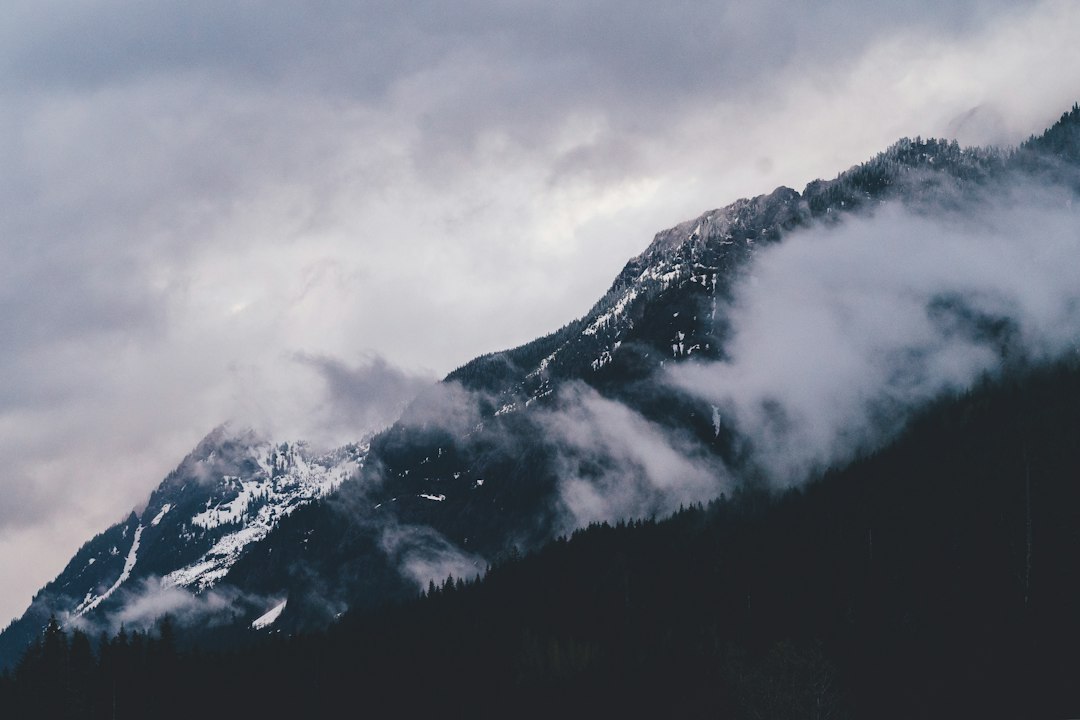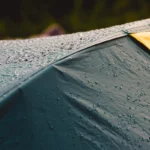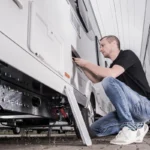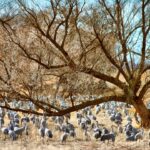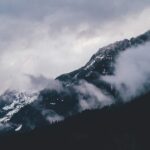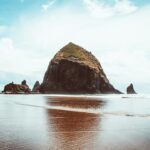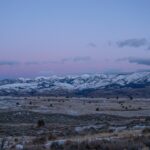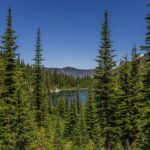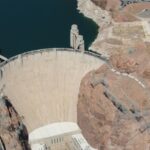Overlanding is a popular outdoor activity that involves traveling long distances in a self-sufficient manner, typically by off-road vehicles. It combines elements of camping, off-roading, and adventure travel, allowing enthusiasts to explore remote and rugged areas that are not easily accessible by traditional means of transportation. Washington State, with its diverse landscapes and abundance of natural beauty, is a perfect destination for overlanding.
Washington offers a wide range of terrains for overlanders to explore, from the rugged coastline of the Olympic Peninsula to the towering peaks of the Cascade Mountains. The state is home to numerous national forests and wilderness areas, providing ample opportunities for off-road adventures. Overlanding in Washington has a rich history, with early pioneers and explorers venturing into the state’s backcountry in search of new discoveries.
The Best Overlanding Routes in Washington
Washington State offers a variety of overlanding routes that cater to different skill levels and interests. One popular route is the Washington Backcountry Discovery Route (WABDR), a 600-mile off-road trail that traverses the state from south to north. The WABDR takes you through diverse landscapes, including deserts, forests, and mountains, and offers stunning views along the way.
Another popular route is the Olympic Peninsula Loop, which takes you on a scenic journey around the Olympic Peninsula. This route allows you to explore the rugged coastline, ancient rainforests, and stunning mountain vistas of the Olympic National Park. The Peninsula Loop offers a mix of on-road and off-road driving, making it suitable for both beginners and experienced overlanders.
For those seeking a more challenging adventure, the Cascade Mountains offer several overlanding routes that will test your skills and provide breathtaking views. The Cascade Loop takes you through the heart of the mountains, passing by alpine lakes, waterfalls, and snow-capped peaks. The route includes sections of off-road driving, as well as opportunities for hiking and camping in the wilderness.
Camping and Accommodations for Overlanders in Washington
When it comes to camping and accommodations, Washington State has plenty to offer overlanders. There are numerous campgrounds and RV parks located throughout the state, many of which are situated in scenic locations with easy access to outdoor activities.
Some recommended campgrounds for overlanders include Cape Disappointment State Park on the coast, which offers beachfront camping and stunning views of the Pacific Ocean. In the Olympic National Park, there are several campgrounds to choose from, including Kalaloch Campground, which is located right on the beach.
For those who prefer a more rustic experience, there are also plenty of dispersed camping options available in Washington’s national forests. These areas allow for more freedom and solitude, but require you to be self-sufficient and follow Leave No Trace principles.
If camping is not your preferred option, there are also alternative accommodations available for overlanders in Washington. Many towns and cities have hotels and motels that cater to outdoor enthusiasts, providing a comfortable place to rest after a long day of exploring. Additionally, there are vacation rentals and cabins available for those who want a more secluded and private experience.
Planning Your Overlanding Trip: Tips and Tricks
| Topic | Description |
|---|---|
| Destination | Research and choose a suitable location for your overlanding trip |
| Vehicle | Ensure your vehicle is in good condition and equipped for the trip |
| Route | Plan your route and have alternative options in case of unexpected obstacles |
| Supplies | Make a list of necessary supplies and pack accordingly |
| Communication | Have a reliable communication plan in case of emergencies |
| Permits | Check if permits are required for your chosen destination and obtain them in advance |
| Weather | Check the weather forecast and plan accordingly |
| Navigation | Have a reliable navigation system and backup options |
| Camping | Research and choose suitable camping spots along your route |
| Emergency Kit | Prepare an emergency kit with first aid supplies, tools, and spare parts |
Planning an overlanding trip in Washington requires careful preparation and consideration. Here are some tips and tricks to help you plan your adventure:
1. Research the routes: Before embarking on your trip, make sure to research the routes you plan to take. Familiarize yourself with the terrain, difficulty level, and any permits or restrictions that may apply.
2. Check the weather: Washington’s weather can be unpredictable, so it’s important to check the forecast before heading out. Be prepared for changing conditions and pack accordingly.
3. Pack essential gear: When overlanding, it’s important to be self-sufficient and prepared for any situation. Make sure to pack essential gear such as a first aid kit, tools, spare parts, and extra food and water.
4. Plan for emergencies: It’s always a good idea to have a plan in case of emergencies. Make sure to have a communication device, such as a satellite phone or a two-way radio, and let someone know your itinerary and expected return date.
5. Respect the environment: When overlanding in Washington, it’s important to respect the environment and practice Leave No Trace principles. Pack out what you pack in, stay on designated trails, and be mindful of wildlife and sensitive areas.
Off-Road Adventures in Washington’s National Forests
Washington is home to several national forests that offer endless opportunities for off-road adventures. From rugged mountain trails to scenic forest roads, these areas provide a playground for overlanders looking to explore the backcountry.
One popular national forest for off-roading is the Gifford Pinchot National Forest, located in southwestern Washington. This forest offers a variety of off-road trails, ranging from easy to challenging, and provides access to stunning viewpoints and alpine lakes.
Another great option is the Okanogan-Wenatchee National Forest, which spans over four million acres in central Washington. This forest is known for its diverse landscapes, including high alpine meadows, deep canyons, and dense forests. The forest offers numerous off-road trails that take you through some of the most scenic areas in the state.
For those looking for a more remote and rugged experience, the Colville National Forest in northeastern Washington is a great choice. This forest is less developed than others in the state, offering a true wilderness experience. The forest has several off-road trails that wind through dense forests and provide access to hidden lakes and waterfalls.
Overlanding on the Olympic Peninsula: A Unique Experience
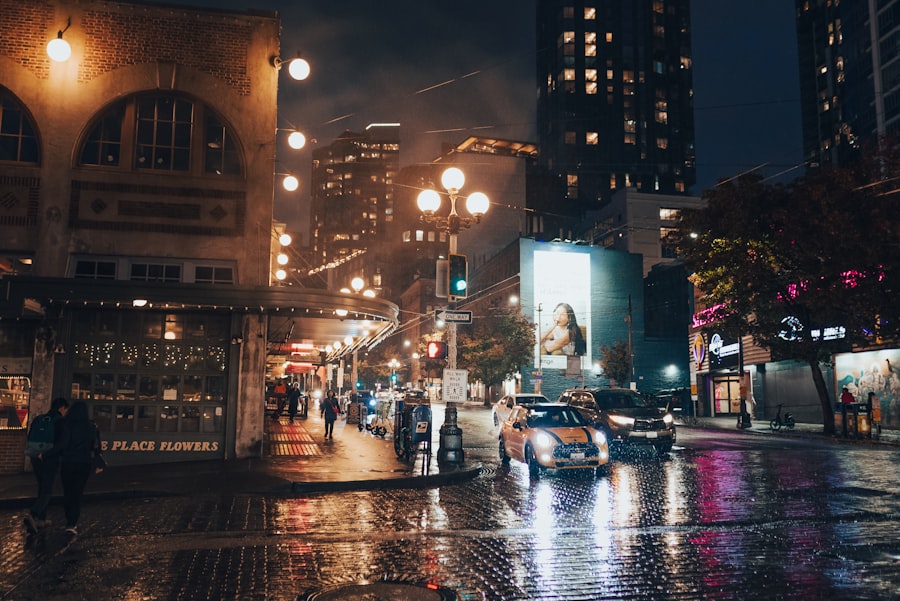
The Olympic Peninsula is a unique and diverse region in Washington that offers a one-of-a-kind overlanding experience. The peninsula is home to the Olympic National Park, a UNESCO World Heritage Site known for its pristine wilderness and diverse ecosystems.
One recommended overlanding route on the Olympic Peninsula is the Olympic Peninsula Loop, which takes you on a scenic journey around the entire peninsula. The route starts in the city of Olympia and follows Highway 101, passing through towns such as Port Angeles and Forks. Along the way, you’ll have the opportunity to explore the rugged coastline, ancient rainforests, and stunning mountain vistas of the Olympic National Park.
Highlights of overlanding on the Olympic Peninsula include visiting the Hoh Rainforest, one of the wettest places in the United States, and exploring the beaches of La Push, which are known for their dramatic sea stacks and tide pools. The peninsula also offers opportunities for wildlife viewing, with the chance to spot elk, deer, and even bald eagles.
Discovering Washington’s Backcountry: Remote Destinations to Explore
Washington State is home to many remote destinations that are perfect for overlanders looking to get off the beaten path. These destinations offer a sense of solitude and adventure, allowing you to truly immerse yourself in nature.
One remote destination worth exploring is the North Cascades National Park, located in northern Washington. This park is known for its rugged mountains, glaciers, and pristine alpine lakes. Overlanders can explore the park’s backcountry by following off-road trails that take them deep into the wilderness.
Another remote destination is the Methow Valley, located in north-central Washington. This valley is surrounded by mountains and offers a variety of outdoor activities, including hiking, fishing, and wildlife viewing. Overlanders can explore the valley’s backcountry by following forest roads that lead to hidden lakes and meadows.
The Palouse region in southeastern Washington is another remote destination that offers unique overlanding opportunities. This area is known for its rolling hills, wheat fields, and small towns. Overlanders can explore the region’s backcountry by following gravel roads that wind through the countryside, providing stunning views of the landscape.
Overlanding Through the Cascade Mountains: Scenic Drives and Hidden Gems
The Cascade Mountains in Washington offer some of the most scenic drives and hidden gems in the state. Overlanding through this mountain range allows you to experience the beauty of the Pacific Northwest up close.
One recommended overlanding route through the Cascade Mountains is the Cascade Loop, a 440-mile scenic drive that takes you through some of the most picturesque areas in the state. The route starts in Everett and follows Highway 2, passing through towns such as Leavenworth and Winthrop. Along the way, you’ll have the opportunity to explore alpine lakes, waterfalls, and charming mountain towns.
Highlights of overlanding in the Cascade Mountains include visiting Lake Chelan, a deep glacial lake surrounded by mountains, and exploring the Bavarian-themed town of Leavenworth, which offers a unique cultural experience. The mountains also provide opportunities for outdoor activities such as hiking, fishing, and wildlife viewing.
Wildlife Encounters on Washington’s Overlanding Routes
Washington State is home to a diverse range of wildlife, making it a great destination for wildlife enthusiasts. While overlanding in Washington, you may have the opportunity to encounter a variety of animals in their natural habitats.
Some common wildlife species you may encounter include elk, deer, black bears, and bald eagles. The Olympic Peninsula is known for its population of Roosevelt elk, which can often be seen grazing in meadows or crossing rivers. The North Cascades National Park is home to a healthy population of black bears, which can sometimes be spotted foraging for food.
When encountering wildlife while overlanding, it’s important to remember to keep a safe distance and observe from a distance. Do not approach or feed wild animals, as this can be dangerous for both you and the animals. It’s also important to store food and garbage properly to avoid attracting wildlife to your campsite.
Overlanding Safety in Washington: Preparing for Emergencies
While overlanding in Washington, it’s important to be prepared for emergencies and take necessary precautions to ensure your safety. Here are some tips to help you stay safe while exploring the state’s backcountry:
1. Plan your route and share your itinerary with someone you trust. Let them know when you expect to return and check in with them regularly.
2. Carry a communication device, such as a satellite phone or a two-way radio, in case of emergencies. Make sure you know how to use it before heading out.
3. Pack a first aid kit and familiarize yourself with basic first aid procedures. Be prepared to handle minor injuries and know when to seek professional medical help.
4. Carry essential safety gear, such as a fire extinguisher, a shovel, and a recovery kit for your vehicle. These items can be useful in case of accidents or getting stuck.
5. Be aware of your surroundings and pay attention to weather conditions. Washington’s weather can change rapidly, so be prepared for sudden storms or other adverse conditions.
Overlanding in Washington State offers a unique and exciting way to explore the state’s diverse landscapes and natural beauty. From the rugged coastline of the Olympic Peninsula to the towering peaks of the Cascade Mountains, there are endless opportunities for adventure and discovery.
Whether you’re a beginner or an experienced overlander, Washington has something to offer everyone. With its rich history of exploration and abundance of outdoor activities, it’s no wonder that overlanding has become such a popular activity in the state.
So why wait? Start planning your own overlanding trip in Washington today and experience the thrill of exploring the state’s backcountry. Whether you choose to follow the Washington Backcountry Discovery Route, explore the Olympic Peninsula, or venture into the remote destinations of the state, you’re sure to have an unforgettable adventure. So pack your bags, hit the road, and get ready to discover the beauty of Washington State through overlanding.
If you’re looking for the best overlanding destinations in Washington, you won’t want to miss out on exploring the must-see Cascades. From breathtaking waterfalls to stunning mountain vistas, this region offers a wealth of natural beauty and outdoor adventure. To learn more about chasing waterfalls in Oregon and Washington, check out this informative article on Overlanding America’s website: Chasing Waterfalls: Oregon and Washington’s Must-See Cascades. Discover hidden gems and plan your next overlanding trip to Washington today!
FAQs
What is overlanding?
Overlanding is a type of self-reliant travel where the journey is the primary goal, often involving off-road vehicles and camping equipment.
Where can I go overlanding in Washington?
Washington offers a variety of overlanding destinations, including the Olympic Peninsula, Mount Baker-Snoqualmie National Forest, and the North Cascades Highway.
What kind of vehicle do I need for overlanding in Washington?
A four-wheel drive vehicle with high clearance is recommended for overlanding in Washington, as many of the roads and trails are unpaved and rugged.
Do I need a permit to go overlanding in Washington?
Permits may be required for certain areas, such as national parks and forests. It is important to check with the specific agency or land manager before embarking on an overlanding trip.
What are some safety tips for overlanding in Washington?
Some safety tips for overlanding in Washington include carrying extra food, water, and supplies, checking weather and road conditions before departing, and letting someone know your itinerary and expected return date. It is also important to practice Leave No Trace principles and respect wildlife and natural resources.
